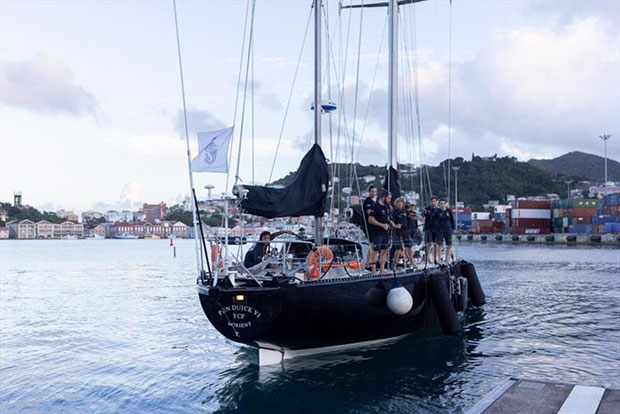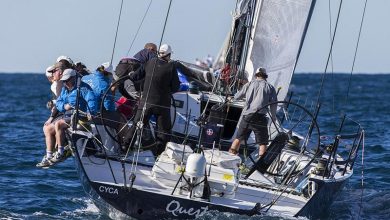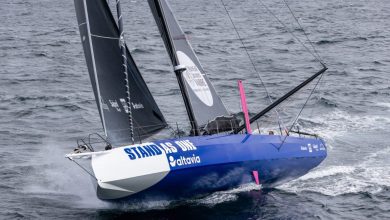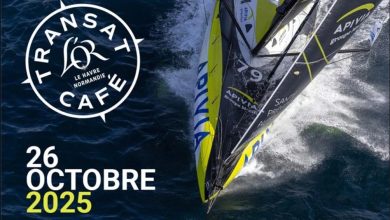Rolex Fastnet Race 2021
There are many factors that play a part in determining the eventual winner of an offshore race, but it is the approach of the successful crew that is the most decisive.
This was never more so than at the 2021 Rolex Fastnet Race, where the young crew of the British yacht Sunrise demonstrated the tenacity, skill and moments of inspired intuition required to outperform the opposition at one of sport’s greatest challenges of human endeavour and resilience.
First held in 1925 and organized by the Royal Ocean Racing Club (RORC) ever since, the 695 nautical mile race (1,287 kilometres) has been supported by Rolex since 2001. The Swiss watchmaker’s partnership with the biennial race flows naturally from its reputation as one of the world’s most demanding offshore contests. This year’s edition attracted a fleet of 337 yachts of which 264 were competing for the overall win on time correction.
Significantly, for the first time in its near 100-year history, the course did not end in Plymouth, England. The change to Cherbourg, France marks an evolution in this historic race adding 87 nm (161 km) to the length as well as fresh tidal complexities.

The assembled fleet was as impressive as ever. From professionally crewed maxi trimarans and monohulls, through the ocean racing one design classes to the usual mix of more Corinthian yachts, entries reflected the appeal of offshore yachting and the broad range of opportunities the discipline offers.
The 49th Rolex Fastnet Race began on Sunday, 8 August with crews setting off into the teeth of a fierce south-westerly, gusting 30 knots, and a building sea state. It was a brutal first 12 hours or so, with dozens of yachts retiring through equipment failure, injury or overwhelming crew fatigue. It is often said that you cannot win a yacht race on the first day, but you can lose it. One of Sunrise’s expected close competitors was involved in a collision on the first afternoon that left them dismasted.

The classic maxi Stormvogel won Line Honours at the Rolex Fastnet Race on her 1961 debut Stormvogel, Sail no: H700, Owner: Greenwater Marine Limited – photo © Rolex / Kurt Arrigo
Leading from the off, the first boat to complete the race was the French multihull, Maxi Edmond De Rothschild, in an impressive time of just over 33 hours – the benchmark for the new course. Skorpios, the largest entrant in the fleet at 140 feet (43 metres), reached Cherbourg some 24 hours later setting the monohull target time for future races. These yachts are at the cutting edge of their respective area of yacht design, both featuring examples of foiling technology that reduce drag and increase speed by lifting the boat out of or higher in the water. Their crews include proven individuals with Charles Caudrelier and Frank Cammas, both former Rolex World Sailors of the Year and round the world race winners leading the trimaran, and Fernando Echavarri, another past-Rolex World Sailor and Olympic gold medallist, skipper of the supermaxi.

Skorpios was the first monohull to round the Fastnet Rock, passing the iconic turning point at 1820 BST on the second day – photo © Rolex / Kurt Arrigo
Line honours in the Rolex Fastnet Race is significant. It guarantees a place in history; one’s name added to an ever-lengthening list of sailing legends. It is a contest of technology as well as preparation, determination and skill. It is not, however, the most sought-after prize.
Winning overall from a fleet of more than 250 yachts is, in the words of Tom Kneen, the owner and skipper of Sunrise: “a once in a lifetime achievement”. The crew must work seamlessly to fit together correctly every piece of the three-dimensional jigsaw. It is a race against time, where each decision, each manoeuvre, requires planning and execution. In the depth of the night, it takes a particular strength of will to press home an advantage or make a brave tactical decision that will recover lost ground.

Sunrise at the finish of the 49th Rolex Fastnet Race – photo © Stefano Gattini
According to Kneen, among a number of critical points: “The Scillies were key. We got there just before the ridge of light pressure. We knew we had to give it everything we had to stay in front of the ridge.” All their pre-race weather routing suggested Sunrise would get stuck in this zone of light wind. In the end, their hard work paid off as instead they enjoyed a period of fast reaching that nailed the door firmly shut on their rivals.
Kneen gave credit to the RORC and their partners in Cowes and Cherbourg for putting on the Rolex Fastnet Race. “Anyone who has managed to arrange an event in this pandemic deserves a medal. The level of complexity is just at a completely different level.” He felt the RORC’s decision to move the finish to Cherbourg had been bold, and that the immaculate delivery of this edition demonstrated the quality of the people at the club.
For nearly a century, the Rolex Fastnet Race has set the highest standards of excellence in offshore sailing. It is a challenge that inspires sailors of all backgrounds. Rolex is proud to support a sporting contest that continues to unite like few others, one that mirrors its own Perpetual spirit: humbly adapting to the elements, constantly seeking to improve and summoning one’s deepest resources.

Strong winds from the south west and a building sea state made for a dramatic opening few hours as yachts battle out of The Solent – photo © Carlo Borlenghi
by Quinag 15




